#Spiritualist essay
Explore tagged Tumblr posts
Text
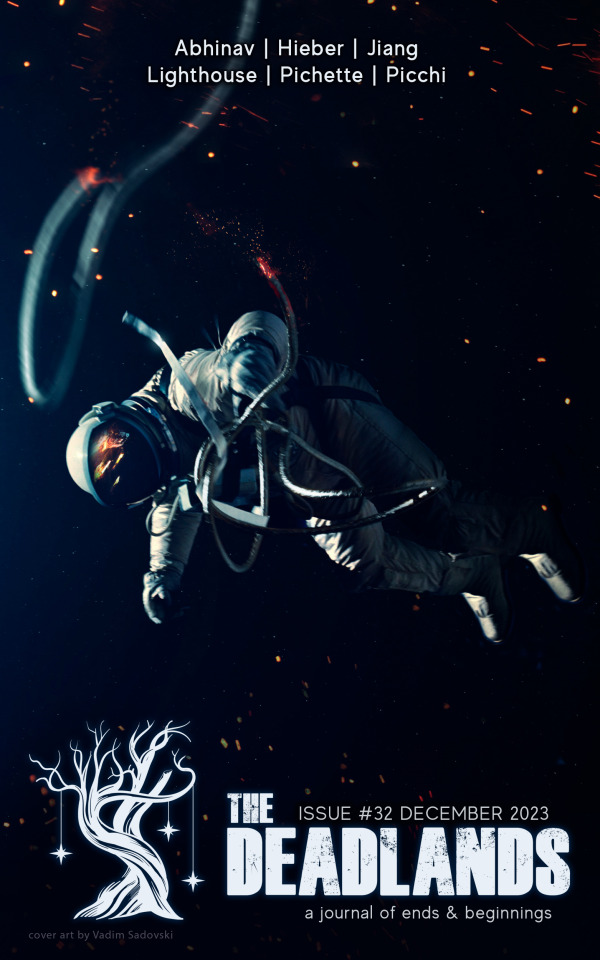
Dears! My non-fiction essay "On Paranormal Chaplaincy", chronicling how my work as a ghost tour guide & lecturer has put me into a unique place, one I feel is a deeply spiritual responsibility, is now available via this truly amazing issue, released today. Honored to be part of it.
Buy the issue and support the magazine here, thank you!
This is a soul-searching non-fiction essay on ghosts, including some very tender moments I've never before shared in print, and it is the last of my awards-eligible releases of '23. If you're an HWA or SFWA voting member, I'd be honored if you'd consider it in any available short form non-fiction category this awards season, thanks so much!
#ghosts#gothic#thedeadlands#nonfiction#essay#personal essay#essay writing#death positive#death poetry#paranormal#chaplain#ghost tour#ghost stories#paranormal books#haunted house#haunted history#onparanormalchaplaincy#spiritualist#spirituality#spiritual journey#mysticism#spiritual#spiritualgrowth#mystic#mystical#esotericism#existentialism#existential crisis#existential dread
1 note
·
View note
Text

In spirit photography, the camera apparatus functions like a spiritual medium that somehow detects the presence or aura of an otherwise invisible spirit world. The result is usually an image that merges the real physical world with a spiritual presence. The image often combines the clear picture of the real person with that of a faded apparition of another being, such as a dead relative or a historic figure. These images seem to provide some proof of a parallel world existing around the real.


Seemingly documenting this world, the photography draws on the element of the mechanical unaltered reproduction of what is in front of the camera’s lens. This reproduction is focusing on the material image itself. In fact, some spirit photographers claimed to be the spiritual medium and to develop the images they only needed to hold a sensitive plate in their hands (Gunning, 1995: 52–53).

Fatal Frame presents a broad range of references to spiritualist photographic practice. The two functions of spirit photography, as creative, as well as documentary practice, are both present and used to enhance the terror. However, unlike the traditional forms of spirit photography that look at the images after their production, Fatal Frame puts the player into the active role of the photographer at the time and location of the shot.


To take the best possible picture, the player has to put herself in the greatest danger, facing the attacking ghastly creature and waiting as long a possible to allow the camera’s exorcist power to build up. [...] The player of Fatal Frame becomes both the manipulative spirit photographer and the contact to the spirit world.

The pictures are staged as continuous evidence for the reality of the terrifying apparitions; because the player took the photograph herself and with much effort, the photographic image is even more believable. The player creates more and more convincing proof to support her own horror experience. As Makoto Shibata, the series’ director stated himself: In the Fatal Frame series, I pursue the fear which is generated by the player himself, and condensed as the essence of Japanese horror to generate the kind of fear which I personally believe is the most horrible [Shibata, 2005].
Fatal Frame II: Crimson Butterfly (PlayStation 2, 2003).
Shadow Land: Light from the Other Side, E. D'Esperance, 1897.
Nitsche, M. (2009). Complete horror in fatal frame. Horror Video Games: Essays on the Fusion of Fear and Play, 200-219.
43 notes
·
View notes
Note
what do you think are good resources for someone who wants to get into Elf Religion?
there's quite a lot floating around out there, luckily! most of the effort comes in hunting it down and winnowing out what works best for you! there's also lots and lots of mixed or multi-source elf stuff out there, i just work primarily with tolkien sourced stuff. i can't comment much on other sources, so what i list here will be tolkien based or tolkien adjacent at the least! reading the fullness of the legendarium, not just the silm but also HoME and other texts, will also help you find what feels right.
so before we get to the long stuff, i really recommend you go through t-e/wal's website first and look at the statement of faith, valar page, and loa page. that's a pretty good summary of the most basic parts as far as belief goes. practice is something you can make unique to you! t-e/wal has a very modern-festival-paganism vibe to their rituals. i-v is doing modern western 'shamanism' (quotes bc that is a stolen name and i don't condone its use, but the alternative 'imaginal gnosis' is unwieldy and not commonly used).
if you already have your own favorite magical practices, you could find ways to adapt them to the loa and the valar! have fun with it! some of us do lots of magic, some of us mostly do worship. it can be as complicated or as simple as you want. this list comes from a collection i have been working on since 2022 and lists both orgs and individuals posting their own experiences.
T-e or wal : a shortening for Tie Eldalieva which changed its name to Way of Arda's Lore in 2024, which is a religious organization based in the usa for tolkien religionists. They (meaning a few of their loremasters with high overlap wth I-v) have worked on the loa and astronomy of the legendarium extensively. their resources are great and pretty universally used and tweaked by tolkien spiritualists of all kinds.
main website link https://elvenspirituality.com/
facebook , old name and older content https://www.facebook.com/elvenspirituality
facebook, new name and newer content https://www.facebook.com/profile.php?id=61559024296013
youtube link https://www.youtube.com/@elvenspiritualpath
they currently have years of public virtual rituals and discussions on essays or white papers written by their lore masters. their membership overlap with i-v means i-v lore masters will sometimes appear in their videos.
I-v : a shortening for Ilsalunte Valion, a gnostic group closely related to T-e but with different motivations which has done a lot of the imaginal work and loremastery to make tolkien religion a rich possibility for many people. Their approach is less public, but deeper and more personal, than T-e. they focus a lot on gnosis and meditative exploration and use different ritual techniques than t-e/wal.
ilsalunte-valion main website http://westofwest.org/
the main feature is the forum, which you will need to register as a member to see most of.
Dave, a founding member and loremaster of both t-e/wal and i-v has a collection of more recent writing that is relevant to both organizations and people curious about them. found here https://hackmd.io/@EriolElwin/rJrwhaDaR
hewal : a shortening for High Elven Wisdom and Love, which is the youtube channel of Kmberiel Eventide. Kimber-el/Kimberel/Kimberiel is a starseed and mystic, and overlaps with tolkien religion enough that she joined and assisted T-e in getting legal religious recognition before parting and going her own way again.
while hewal has been inactive for several years, some of her videos are tolkien-specific and she made and posted the vala-specific informational videos for t-e/wal when she joined them. in those videos (still on t-e/wal's youtube and i think on hers as well) she goes through each mention of the vala in the legendarium texts book by book. this can be very helpful for someone that isn't absorbing the same summaries from the tolkien gateway website.
hewal youtube tolkien specific playlist https://www.youtube.com/playlist?list=PLbW2r96baVJy1_ItxeeuFKrfde3HdgAH8
she has tolkien relevant videos not in that playlist so make sure to snoop around.
ES : a shortening for Elven Scholar, which is the youtube channel for Earendil Spindelilus, who was once of T-e but does his own work for loremastery and runs an online school. looks like he stopped posting youtube videos about a year ago, but his facebook group and school still have some activity.
youtube channel here https://www.youtube.com/@ElvenScholarMusings
his online school http://www.elvenscholar.org/
warning: there are no state or federal agencies that license herbalism in the united states. his claims that his courses will award you the title 'certified herbalist' are vanity titles only. all those interested in herbalism should thoroughly investigate the legal licensure status of herbalism, naturopathy, and nutrition and dietetics for their nation and state. (afair naturopathy and nutrition/dietetics are licensed in the usa and cannot be practiced without legal license.) if your nation and state has no licensure process for herbalism, look for the self-regulatory bodies developed by professionals of that field and learn the base standards of education assumed for that field by that body. in the united states, this would be the american herbalists' guild and the american botanical council.
this last one is a little controversial in that alyras was formerly a founder and treasurer of t-e, and due to usa incorporation laws, was considered the only remaining board member of t-e when they ousted her, which is the reason t-e had to change their name to wal legally. i don't understand the situation but the tea is spilled lmao. i do still use and enjoy her reference book with lots of modification and ignoring what i dont care for. she also uses ai generated images for her website, which really rubs me the wrong way. i think her urls being so visually similar to t-e/wal's is on purpose.
her work is very new age and also centered in music. i do enjoy the tambour drones a lot for meditation!
her org website https://yanaeldalieva.org/about.html
there should be a link for her handbook somewhere in there, which is a gift in exchange for donation. dm me if you need help finding it, as the website has been re-arranged since i last saw it.
alyras/yana eldalieva facebook https://www.facebook.com/elvenspiritualpath
alyras youtube https://www.youtube.com/@elvenspiritualpathmusic/videos
#ardan paganism#elven spirituality#elvenkin#tolkien spirituality#tie eldalieva#elfgang#letinwesselma#my mothers name is death
10 notes
·
View notes
Text
Candle Light Meditation: The Peculiar Treatment for Insomnia, Irregular Sleep Patterns, and ADHD
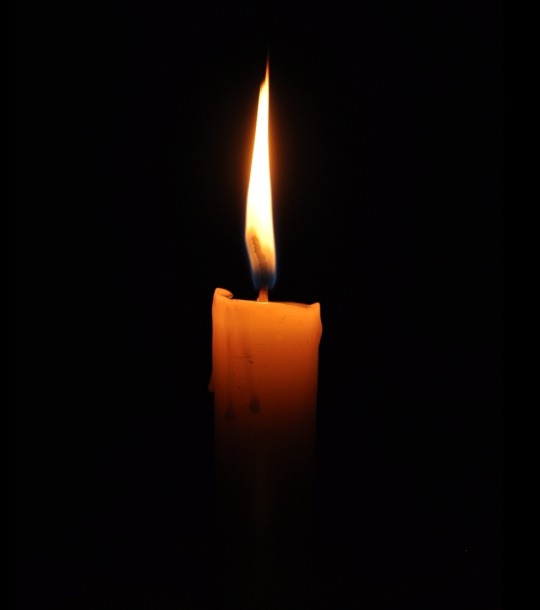
Hi everyone! Today Im writing about a new meditation trick Ive been testing out and Ill be sharing how to do it if youre interested.
Why I chose to do it
While I may like to do old man things, sitting at home and watching candle lights werent really my idea of a good time. However in the past few weeks Ive had really big issues maintaining a healthy sleep pattern and Ive always struggled with ADHD and getting school work done. I was told by a buddy of mine about mindfulness meditation and that has helped my adhd in the past so I figured this was worth a go!
Candle Light Meditation Craze
If you go to google or youtube youll certainly find all kinds of gurus and spiritualists suggesting this meditation will "decalcify your pinal gland" which would be something impacting most of us around the age 18-30 depending on diets and things like that
Here is the issue THERE IS NO RESEARCH TO SUGGEST THIS PRACTICE DECALCIFIES YOUR PENAL GLAND. So to say if that happens or not is not my place. Im a dude who posts bangers on the internet, not a neuro scientist.
What it did do
Despite the research not being there. I can tell you in the few days of doing it I have noticed my focus has sharply improved. My fatigue isnt so bad either. My sleep schedule hasnt improved to much yet but hey! Im a college student Im busy chatting and making friends (doing essays lol).
I believe some of these symptoms are associated with the pinal gland but again, I have no idea. All I can tell you is I do eat frozen foods often and this did help. I dont have a CT scanner in my room so beyond that I have no idea lol.
How to do candle light meditation
Grab a candle, light it and turn off as many lights to get the room as dark as you can. Try to use a candle with a still flame and turn off fans aswell.
Try to focus on the most solid part of the flame for a few seconds up till 3 minutes. You ideally want to do this until you feel a fuzzy feeling in your head.
Turn away from the candle and close your eyes, you should see the imprint of the flame, stare at that for as long as you can until it goes away.
Try to do repeat process 3 times a day (in one setting) for 5 days. Usually by 5 days you should begin to feel a strange tiredness in your mind. This is what your looking for. You are overloading that part of the brain because its not really being used. Much like trying to run for the first time in a few months.
The end result
Around day 5 you should find yourself being able to focus more! Ive also heard some people report it helps them with creative writing aswell but I cant attest to that.
Let me know what you guys think! Hope it helps :>
28 notes
·
View notes
Text
Helena Blavatsky and Lemuria
Lemuria never existed. This spiritualist made a career out of it anyway.
From the essay:
One of the most contentious and fascinating features of Helena Petrovna Blavatsky’s (1831–1891) occult cosmology was her belief in the existence of Lemuria, a large extinct continent that formerly connected the Pacific and Indian oceans. Her lifelong spiritual quest around Europe, the Middle East, and India resulted in her yearning for esoteric knowledge, and she claimed to have obtained profound insights from mystical teachings from ancient times. Her monumental work, The Secret Doctrine, which came out in 1888, revealed her in-depth beliefs of Lemuria’s role in the larger scheme of human evolution and beginnings. Blavatsky created a complex web of theories by referencing Buddhist and Hindu texts, as well as Western esoteric traditions. She proposed that Lemuria was the original home of the Third Root Race, an extremely developed civilization possessing extraordinary psychic powers and spiritual awareness.
7 notes
·
View notes
Text
Hi I'm treva and I do tarot, Im a shifter, witch and overall spiritualist so message me if you want a reading 5$ each reading; (3 questions),cause I know were all broke out here you can ask a variety of questions just not a whole entire essay, message me for more info.
#reality shifting#shifting antis dni#shifting script#witchblr#witchcraft#witch aesthetic#shifting community#shifting motivation#shifting blog#desired reality#reality shifter#spirituality#spiritualist#shifters
5 notes
·
View notes
Text


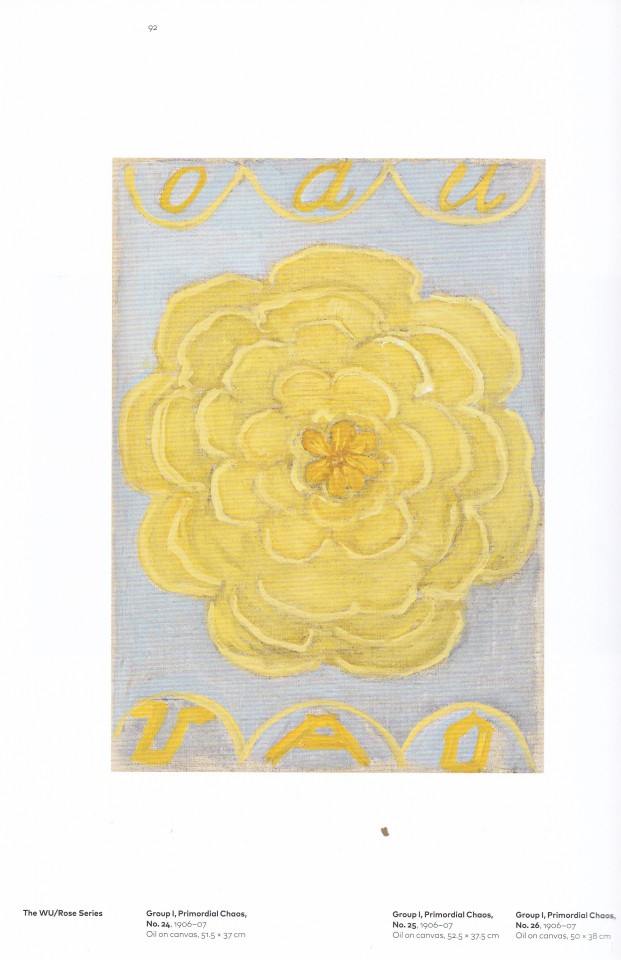


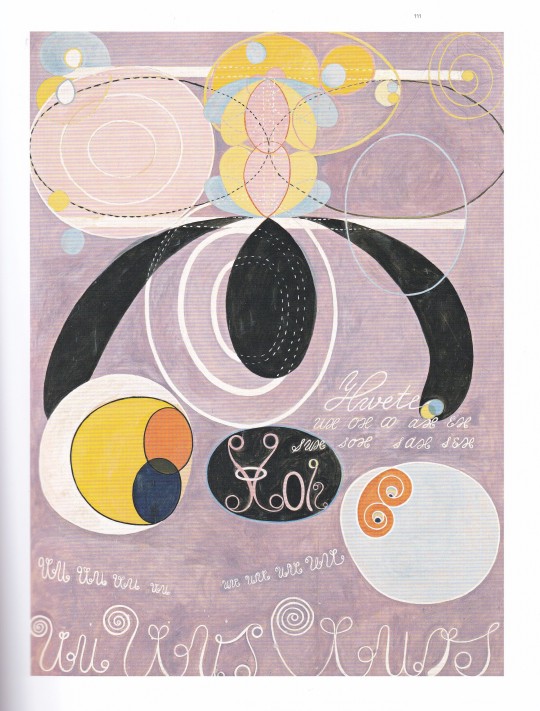

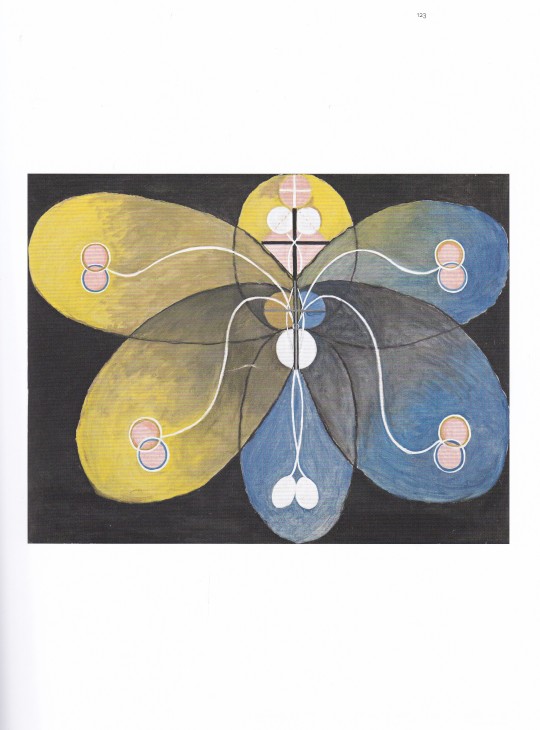
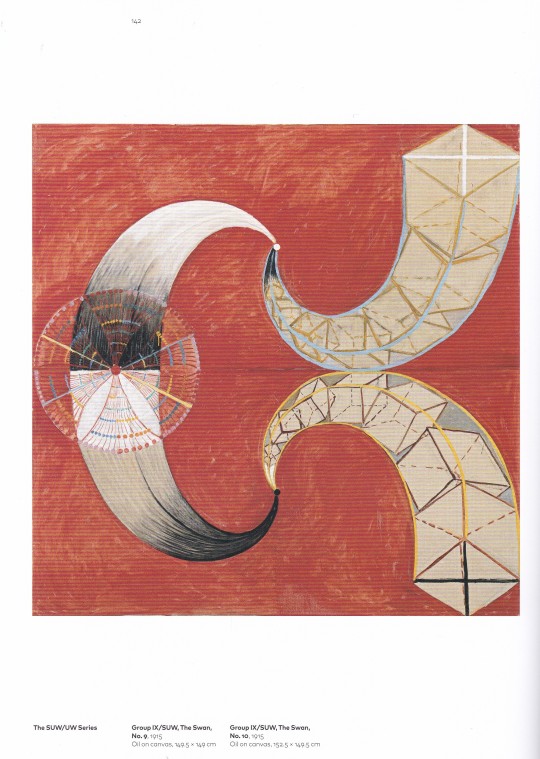

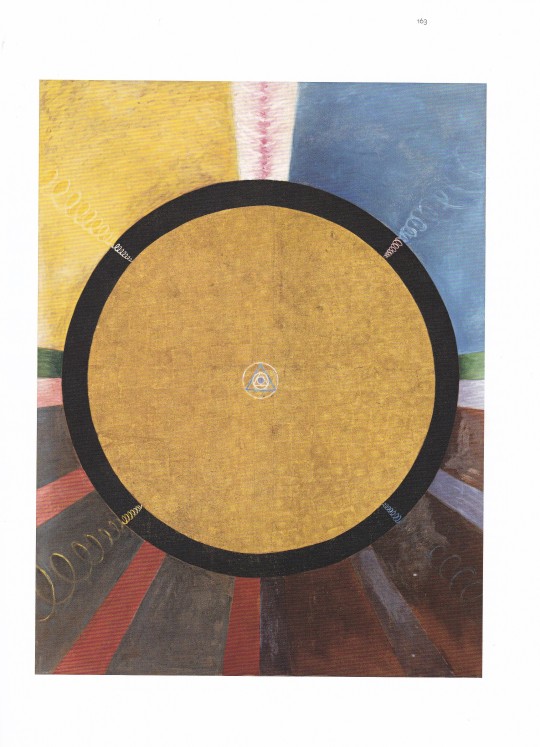
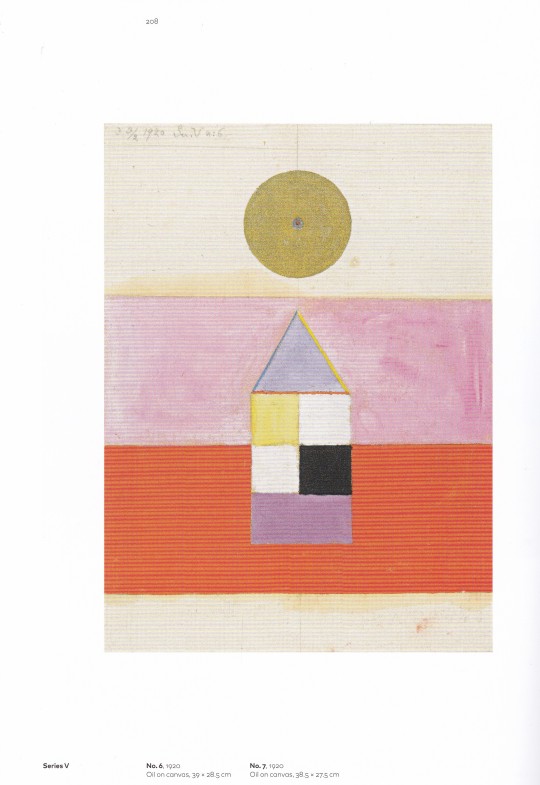

Hilma af Klint Paintings for the Future
Tracey Bashkoff
Guggenheim Museum Publ., New York 2018, 239 pages, 22.35 x 29.46 cm, ISBN 978-0892075430
euro 67,00
email if you want to buy [email protected]
Hilma af Klint's daring abstractions exert a mystical magnetism
When Swedish artist Hilma af Klint died in 1944 at the age of 81, she left behind more than 1,000 paintings and works on paper that she had kept largely private during her lifetime. Believing the world was not yet ready for her art, she stipulated that it should remain unseen for another 20 years. But only in recent decades has the public had a chance to reckon with af Klint's radically abstract painting practice―one which predates the work of Vasily Kandinsky and other artists widely considered trailblazers of modernist abstraction. Her boldly colorful works, many of them large-scale, reflect an ambitious, spiritually informed attempt to chart an invisible, totalizing world order through a synthesis of natural and geometric forms, textual elements and esoteric symbolism.
Accompanying the first major survey exhibition of the artist's work in the United States, Hilma af Klint: Paintings for the Future represents her groundbreaking painting series while expanding recent scholarship to present the fullest picture yet of her life and art. Essays explore the social, intellectual and artistic context of af Klint's 1906 break with figuration and her subsequent development, placing her in the context of Swedish modernism and folk art traditions, contemporary scientific discoveries, and spiritualist and occult movements. A roundtable discussion among contemporary artists, scholars and curators considers af Klint's sources and relevance to art in the 21st century. The volume also delves into her unrealized plans for a spiral-shaped temple in which to display her art―a wish that finds a fortuitous answer in the Guggenheim Museum's rotunda, the site of the exhibition.
Hilma af Klint (1862–1944) is now regarded as a pioneer of abstract art. Though her paintings were not seen publicly until 1987, her work from the early 20th century predates the first purely abstract paintings by Kandinsky, Mondrian and Malevich.
14/06/23
orders to: [email protected]
ordini a: [email protected]
twitter:@fashionbooksmi
instagram: fashionbooksmilano
designbooksmilano
tumblr: fashionbooksmilano
designbooksmilano
#Hilma af Klint#swedish artist#art exhibition catalogue#Guggenheim Museum NY 2018#abstract art#Paintings for the future#fashionbooksmilano
43 notes
·
View notes
Text
so I’m gardening again and something occurred to me: why do we act like people talking to their plants is a giant red flag? Like in any mass media if it comes up it’s either shorthand for Big Ol’ Mental Problems or Spiritualist Moron Believes In The Mystic Power Of Plant Chatter
When it’s just... a behavior.
I’m standing there, in the sweltering heat, spritzing my tomatoes. I’m doing this for 5-10 minutes it seems, and it’s a vital operation but it’s not like. Mentally engaging. Meanwhile I’m still shocked that I grew these giant plants from tiny seeds, that seemed impossible to me for some reason, and they’re getting all huge and green and starting to sprout flowers and fruit. They still need water.
So yeah, it’s like... apologizing to a chair, or praising a printer for not screwing you over the night before that essay is due, or singing a song narrating your actions while cooking. Talking to things is a human behavior, and that’s non-living things. Those plants I grew from seeds are not on the level of Real Human Baby, but that’s still a living thing that exists due to my effort. Like... yeah? Let’s tell em how good they’re doing.
Anyways it’s very funny to me that this is treated as something Deeply Strange and not the most human thing ever.
21 notes
·
View notes
Text
Howdy and Salaam
Greetings and Salutations,
All spiritualists (or not) are welcome at this blog. I'm glad to have you here. I'm weary of YouTube, TikTok, and Reddit. My special interest is God and I just want to info-dump you. If Islam isn't your cup of tea, that's okay! I only just became a Muslim about a year ago and it's been quite a journey. I would like to write a book about my experiences but I think a free blog is more egalitarian, don't you? I have created various blogs on and off Tumblr over the past decade and a half with spiritual themes - all of which I have lost access to through Gmail account deletions. C'est la vie. It's given me a fresh start and the freedom to begin at the end instead of dragging you through the mud with me from the beginning. But the beginning is really the most amazing part of my journey. You aren't obligated to believe a single word I write, but I do hope to provide you with essays that will give you a chance to chew on something new, a cause to pause and reflect.
May God bless this endeavor and make it a source of blessing for all who touch it. Amin.
2 notes
·
View notes
Text
Neutralised Bios: T.J (1994)
Monday's Younger Sister Tuesday 'T.J' Duke

Monday's Sister & A High-School Senior Tuesday 'T.J' Duke.
"Just five minutes of your time, Mr Mortimer, it's for an essay."
Name
Full Legal Name: Tuesday Jantine Duke
First Name: Tuesday
Meaning: From the English word for the day of the week, which derives from Old English 'Tiwesdæg' meaning 'Tiw's day'.
Pronunciation: TYOOZ-day/TOOZ-day/CHOOZ-day
Origin: English
Middle Name: Jantine
Meaning: Feminine diminutive of 'Jan', a form of 'Johannes', the Latin form of Greek 'Ioannes', itself derived from the Hebrew name 'Yochanan' meaning 'Yahweh is gracious', from the roots 'Yo' referring to the Hebrew God and 'Chanan' meaning 'To be gracious'.
Pronunciation: yahn-TEE-na
Origin: Dutch
Surname: Duke
Meaning: From the noble title, which was originally from Latin 'Dux' 'Leader'.
Pronunciation: DOOK
Origin: English
Titles: Miss
Goes By: T.J
Characteristics
Age: 18
Gender: Female. She/Her Pronouns
Race: Human
Nationality: American Citizen. Born in America
Ethnicity: White (Dutch Heritage)
Birth Date: 13th March 1976
Sexuality: Questioning
Religion: Spiritualist
Native Language: English
Known Languages: English, Dutch, (Some) Spanish
Relationship Status: Single
Astrological Sign: Pisces
Played By: Reese Witherspoon

Appearance
Height: 5'1" / 157 cm
Eye Colour: Blue
Hair Colour: Brown
Hair Dye: Bleached Blonde
Body Hair: N/A
Facial Hair: N/A
Tattoos: (As of Jan 1994) None
Piercings: Ear Lobes (Both)
Scars: None
Health and Fitness
Allergies: None
Alcoholic, Smoker, Drug User: Clean
Illnesses/Disorders: Possible Autism
Medications: None
Any Specific Diet: Vegetarian
Relationships
Affiliated Groups: Maine North High School (Student)
Friends: Fry, Mona
Significant Other: None
Parents: Mozes Duke (66, Father), Wednesday Duke (67, Mother, Née Davidson)
Parents-In-Law: None
Siblings: Monday Duke (26, Sister), Friday Duke (22, Duke)
Siblings-In-Law: None
Nieces & Nephews: None
Children: None
Extras
Level of Education: In High-School (Senior Year)
Occupation: Student
Employer: None
Biography: Tuesday 'T.J' Duke, Daughter of Sergeant Major Mozes Duke and Major Wednesday Duke. Having military parents has made T.J a regimented, hardworking woman but also given her the fear that she could lose her parents at any moment due to their work. Her Grandfather was put behind bars for attempted murder. Her father named her (and her siblings) after the same poem her mother (Wednesday) was named after, leading to most people calling her T.J to diminish confusion between the day and her.
#original character#original writing#original series#Neutralised#T.J#t.j#Tuesday Duke#tuesday duke#Tuesday Jantine Duke#tuesday jantine duke
3 notes
·
View notes
Text
I hate seeing "TAROT TIPS" posts because they all seem to assume that there is one tarot tradition, which is practised by people who all have the same relationship to tarot as each other.
But a Wiccan who believes in the God and Goddess, and a Spiritualist who believes that the cards are presented to them by their Guiding Spirit, and a Christian Hermit who meditates using the cards as a map, all are doing different things as they lay out a spread (just as the client of a dukkerer, a fortune teller, a mystic tarot reader and a sage may all want and expect different things from their reading)
If you come from a tradition that's more concerned with the psychological and using the tarot as a tool for self-reflection and discovery you might laugh and dismiss the ignorance of someone who says that the Knight of Swords means you'll meet a bachelor with dark hair and hazel eyes - But if you're from a fortune telling tradition you might in turn raise an eyebrow when someone insists that the same Knight means that you are a knowledge-seeker who looks before you leap, and nothing about what will happen afterwards.
Likewise, traditions that insist on cleansing the cards and specific ways of storing them and speaking to them, compared to ones which say that the cards need to stay un-cleansed to pick up more of your vibration... And then the ones that say they're just paper, they deserve no more or less ritual treatment than a coffee cup or a pencil.
But "Tarot Tips" posts always seem to be the most random hodgepodge of things that work for the individual that wrote them, almost always written by someone who doesn’t acknowledge that each item on their list comes from a different spiritual and cultural background, and doesn’t even tip their hat to mention them.
TLDR: Tumblr how do I filter down that I want to see Tarot but only from people who practise in half a dozen concrete traditions, I don't want to see Pick A Piles with barnum statements about Your Future Spouse, I don't want to see Which Crystals Charge Your Deck, I want to see essays about how French mystics incorporated folk beliefs into their practise in the 1700s, or how the HOGD interpreted different cards and how that relates to Masonic levels, or how Showmen fortune telling relates to Romany ones, or how early the modern meanings of the cards became settled... Including, people talking about where modern fortune telling traditions like charging and cleansing and crystals came from and how they became "the norm".
3 notes
·
View notes
Text
A Brief History Of Fabianism: Co-opting The Left And Right
"..
Early Fabians tended to downplay their interest in—or debt to—Karl Marx but there can be little doubt that they were inspired by his work, directly or otherwise. I say directly because Marx lived in London from 1849 up to his death in 1883, and spent countless hours working on his Das Kapital in the reading room of the British Museum (which then housed the British Library collection). George Bernard Shaw was introduced to Marx's work by Henry Hyndman, who discovered The Communist Manifesto in 1864 and formed Britain's first socialist political party, The Social Democratic Federation, in 1881. He was the first author to popularize Marx's works in English and introduced them to Shaw around 1882. The Fellowship of the New Life (which later became the Fabian Society) was founded the following year, in 1883, the year of Marx's death.1 Shaw described Marx's Kapital as not a treatise on Socialism: it is a jeremiad against the bourgeoisie…. It was addressed to the working classes; but the working man respects the bourgeoisie, and wants to be a bourgeois. Marx never got a hold of him for a moment. It was the revolting sons of the bourgeoisie itself…like myself, bourgeois, who painted the flag red. The professional and penniless younger son classes are the revolutionary element in society: the proletariat is the Conservative element…. Marx made me a Socialist and saved me from becoming a literary man. (1949, pp. 49–50) The Fellowship of the New Life dissolved in 1898, after which the Fabian Society grew to become a preeminent academic society in the UK. Many Fabians participated in the formation of England's Labour Party in 1900. The party's constitution, written by Sidney Webb, borrowed heavily from the founding documents of the Fabian Society. As seen in the Labour Party Foundation Conference in 1900, the Fabian Society claimed 861 members and sent one delegate. (See World Heritage Encyclopedia, no date given.) The Society grew throughout 1930–1940 over many countries under the British rule, and many future leaders of these countries were influenced by the Fabians during their struggles for independence from the British. These
leaders included India's Prime Minister Jawaharlal Nehru (whose fashion sense—“the Nehru jacket”—influenced the counterculture2), Obafemi Awolowo, who later became the premier of Nigeria's defunct Western Region, and the founder of Pakistan, barrister Muhammad Ali Jinnah. Lee Kuan Yew, the first prime minister of Singapore, had a political philosophy strongly influenced by the Fabian Society. In the twenty-first century, the Fabian Society's influence is felt through Labour Party leaders and former prime ministers of Great Britain, such as Tony Blair and Gordon Brown. The name Fabian was apparently suggested by the spiritualist Frank Podmore, after the brilliant third century Roman general, Quintus Fabius (Maximus Verrucosus, 303-203 BC). Fabius was made a dictator in 221-217 BC, and, with a small band of fighting guerrillas and superior cunning, successfully defended Rome from Hannibal's mighty Carthaginian army. Fabius's tactics involved “gradualism” and “terrorism,” delaying tactics which were greatly disapproved of by his soldiers and the civilians, and which earned him the name of “the Delayer.” After these tactics triumphed, however, his skill and wisdom was more appreciated. Moving past the more or less established history of Fabianism, I found a compelling, and damning, description of the Fabian plan as central to the whole “New World Order” millennia-long Conspiracy (big “C”), in an archived essay called “Fabian Influence on Council Developments in New Zealand” (Christian, 2006). One premise of the information was that the Fabian Society was behind the various Labour movements in Britain and that it concealed elitist, and even capitalist, interests. This was something I could vouch for from direct experience, having grown up in a wealthy socialist family (we were called “champagne socialists”) who were above all business people but also actively involved in local (and, I was slowly discovering, global) politics, in seemingly reformist and New Left movements such as the Campaign for Nuclear Disarmament (CND), all having, sometimes obvious sometimes less so, ties to the Fabian Society..."
The Vice of Kings: How Socialism, Occultism and The Sexual Revolution Engineered A Culture of Abuse
2 notes
·
View notes
Text

𝐄́𝐭𝐮𝐝𝐞: 𝐐𝐮𝐞𝐥𝐪𝐮𝐞𝐬 𝐞𝐧𝐬𝐞𝐢𝐠𝐧𝐞𝐦𝐞𝐧𝐭𝐬 𝐭𝐢𝐫𝐞́𝐬 𝐝𝐮 𝐥𝐢𝐯𝐫𝐞 𝐝𝐞 𝐉𝐨𝐛 (𝐏𝐚𝐫𝐭𝐢𝐞 𝟔/𝟐𝟎)
Nous poursuivons notre étude sur quelques enseignements tirés du livre de Job dans la Bible chrétienne. Job, homme intègre et droit devant l'Éternel des armées a été livré entre les mains de Satan, son Créateur ayant une confiance absolue en lui, tandis que l'Accusateur pariait que Job renierait son Maître au moindre malheur. Le Diable a eu le feu vert et a ravagé *tout ce que possédait Job*: des enfants aux bétail, rien n'est resté. Devant un tel malheur, comment nous comporterions-nous?
Dans la parabole du Semeur (Lire Matthieu chapitre 13), le Seigneur nous montre quatre catégories de "croyants". Il y en a qui écoutent la Parole *mais ne la comprennent pas*, car le Diable est venu l'ôter de leur coeur. Ce sont ceux-là qui nient l'existence de Christ, ne veulent même pas en entendre parler; ils sont parfois ultra cartésiens, parfois spiritualistes sans être spirituels.
Il y en a qui écoutent la Parole et la reçoivent même avec beaucoup d'empressement; mais hélas, ils manquent de *racine*, et leur fondement s'écroule aussitôt que survient une tribulation ou une persécution. Ce sont ceux qui sont très zélés au début, ou ceux qui viennent au Seigneur à cause d'une maladie ou à la recherche désespérée d'une solution à un problème; lorsque la solution tarde à venir, ils se découragent. Il y en encore qui écoutent, comprennent la Parole, mais les *soucis de ce siècle* les étouffent et rendent la Parole infructueuse: Ils sont dans toutes les tontines, les associations diverses, les projets de richesse, de carrière, tellement d'activités mais ont trop peu de temps pour se consacrer au Seigneur. Et puis, il y a ceux qui écoutent la Parole et la mettent en pratique; ils sont plus aguerris face à certaines situations de la vie. Ils ont même une certaine philosophie qu'on peut traiter de folle.
Job faisait partie de cette catégorie de croyants. Sa philosophie? Premièrement, il dit que *nu il est sorti du sein de sa mère, nu il retournera à la poussière*. Même si on nous enterre avec un costume de un milliard de francs, il va se biodégrader au bout d'un moment, et il ne restera de nous que des ossements. Personne n'est enterré avec ses immeubles, ses voitures de luxe, sa fortune. Si l'on essaie même de vous enterrer avec une forte somme d'argent, soyez sûrs que des gens viendront vous exhumer pour prendre cet argent. À raison en plus, car là où va votre âme, vous n'en aurez pas besoin là bas.
Deuxièmement, Job dit: *L'Éternel a donné, l'Éternel a ôté, que son nom soit béni*. Voilà la véritable sagesse. Il est écrit que *c'est en LUI, Dieu, que nous avons le mouvement, l'être, la vie, le vouloir et le faire*. C'est lui qui donne, c'est lui qui reprend. Il fait vivre, il fait mourir. Il élève, il abaisse. Il blesse, et il panse...Comment certaines personnes réussissent à se convaincre ou à être convaincues que Dieu n'existe pas?...
0 notes
Text
The Tarot: Unlocking the Symbolism
Table of Contents
Introduction to Tarot
Major Arcana: Archetypes and Symbols
Minor Arcana: Exploring the Suits
Tarot Spreads and Layouts: Harnessing Symbolism
Advanced Symbolism: Deepening Your Understanding
Interpreting Tarot Readings: Putting It All Together
Tarot in Practice: Real-World Applications
Maintaining a Tarot Practice: Tips and Strategies
Tarot and Spirituality: Deepening Your Connection
Final Reflections: Embracing the Journey
Chapter 1: Introduction to Tarot
The History and Origins of Tarot
Ancient Beginnings: Tarot’s origins in the 15th century as playing cards. Detailed exploration of early decks like the Visconti-Sforza, including their artistic features and historical context.
The Esoteric Shift: The 18th-century transformation of tarot into a divinatory tool. In-depth look at key figures like Antoine Court de Gébelin and Eliphas Lévi, their theories, and their impact on tarot’s mystique.
Modern Evolution: The 20th-century revival with influential decks like the Rider-Waite-Smith and Thoth decks. Analysis of how contemporary artists and spiritualists have shaped modern tarot practices.
Extended Case Study: Analyze the evolution of tarot from a game to a spiritual tool, highlighting key historical milestones and how these have influenced modern practices. Compare historical and contemporary decks to illustrate changes in symbolism and design.
Comprehensive Exercise: Create a detailed historical timeline of tarot’s evolution, including key figures, events, and deck developments. Write a reflective essay on how historical changes have influenced contemporary tarot practice.
The Structure of the Tarot Deck
Major Arcana: In-depth exploration of the 22 Major Arcana cards, including detailed descriptions, historical origins, and modern interpretations. Discuss the symbolic elements and their implications for personal growth and spiritual journey.
Minor Arcana: Detailed breakdown of the 56 Minor Arcana cards, including the four suits and their associated elements. Analyze the symbolism of each suit (Wands, Cups, Swords, Pentacles) and the significance of the numbered cards and court cards.
Extended Card Descriptions:
Major Arcana: Thorough exploration of each card’s symbolism, historical context, and modern interpretations.
Minor Arcana: Detailed analysis of each suit’s themes, symbolism, and how they relate to everyday life.
Comprehensive Exercise: Create a detailed guide to the tarot deck, including in-depth descriptions and symbolism for each card. Develop a visual chart illustrating the relationships between Major and Minor Arcana cards, and write a reflective piece on their combined meanings.
Getting Started with Tarot
Choosing Your Deck: Guide to selecting a deck that resonates with your personal style and intuition. Discuss the characteristics of various popular decks and how to choose one that aligns with your spiritual and practical needs.
Setting Up Your Space: Step-by-step instructions for creating a dedicated tarot reading space. Include tips on arranging your deck, incorporating candles, crystals, and other tools, and creating an inviting atmosphere.
Developing a Practice: Detailed advice on establishing a consistent tarot practice. Include tips on daily card draws, journaling, setting intentions, and integrating tarot into your daily routine.
Extended Exercise: Design and document your ideal tarot reading space, including layout, decor, and tools. Establish and track a daily tarot practice routine, and reflect on how your connection with the cards evolves over time.
Chapter 2: Major Arcana – Archetypes and Symbols
The Fool’s Journey
Overview of The Fool’s Journey: Detailed explanation of The Fool’s Journey through the Major Arcana. Discuss how each card represents a stage in the archetypal journey of self-discovery and spiritual growth.
Detailed Card Analysis:
The Fool: Exploration of symbolism including the cliff, the dog, and the bag of tools. Analyze its representation of new beginnings and potential.
The Magician: In-depth look at manifestation, skill, and resourcefulness. Examine the tools on the table, the infinity symbol, and their meanings.
The High Priestess: Detailed analysis of intuition, mystery, and wisdom. Discuss the symbolism of the moon, the pillars, and the scroll.
Extended Case Study: Examine how The Fool’s Journey mirrors personal growth experiences. Use real-life examples to illustrate how different stages of the journey have impacted personal development.
Comprehensive Exercise: Create a detailed personal narrative using The Fool’s Journey. Write an extensive account of how each Major Arcana card has influenced your life and personal growth.
Deep Dive into Each Major Arcana Card
In-Depth Analysis: Thorough exploration of each Major Arcana card’s symbolism, historical context, and modern interpretations. Include detailed examples and practical applications.
Examples:
The Emperor: Detailed exploration of authority, structure, and leadership. Analyze the symbolism of the throne, ram’s heads, and scepter.
The Lovers: In-depth look at relationships, choices, and harmony. Discuss the imagery of the couple, the angel, and the garden.
The Tower: Examination of sudden change, upheaval, and revelation. Analyze the symbolism of the lightning strike, falling figures, and crumbling tower.
Extended Exercise: Perform a detailed analysis of selected Major Arcana cards. Write a comprehensive essay on their symbolism, personal significance, and application to various aspects of life.
Connecting Major Arcana Cards
Interaction and Integration: Explore how Major Arcana cards interact with each other to provide a richer interpretation. Discuss the significance of card placements and combinations in readings.
Comprehensive Exercise: Create a spread using only Major Arcana cards and analyze the relationships between them. Write a reflective piece on how the cards’ interactions offer insights into a specific question or situation.
Chapter 3: Minor Arcana – Exploring the Suits
Introduction to the Suits
Overview of the Suits: Detailed exploration of each Minor Arcana suit, including their associated elements and themes.
1. Wands: Analysis of creativity, action, and ambition. Discuss the symbolism of each card in the Wands suit and how it reflects personal goals and projects.
2. Cups: Exploration of emotions and relationships. Analyze how Cups cards represent feelings, connections, and intuitive insights.
3. Swords: Examination of thoughts and conflicts. Discuss how Swords cards address mental challenges and decision-making.
4. Pentacles: Analysis of material and physical aspects. Explore how Pentacles cards reflect practical concerns and financial matters.
Extended Case Study: Compare how each suit reflects different aspects of your life through real-life examples. Analyze how the themes of each suit manifest in your personal and professional experiences.
Comprehensive Exercise: Study the symbolism of each suit in detail. Create visual or written representations of how each suit applies to various aspects of your life and reflect on their significance.
In-Depth Analysis of Each Suit
Detailed Breakdown:
Wands: Explore the themes of creativity and action through the numbered cards and court cards. Reflect on how these themes manifest in your life.
Cups: Analyze the emotional and relational aspects represented by each Cups card. Consider how these elements impact your personal and social experiences.
Swords: Examine the intellectual and conflict-related themes in the Swords suit. Reflect on how these themes relate to your mental processes and decision-making.
Pentacles: Discuss the practical and material aspects of the Pentacles suit. Consider how these themes affect your career, finances, and physical well-being.
Extended Exercise: Perform a multi-suit spread (e.g., a 12-card spread) and analyze how the different suits interact. Write a detailed reflection on the insights gained from the combination of suits and their meanings.
Combining the Suits in Readings
Holistic Interpretation: Understanding how different suits interact provides a more comprehensive view of a situation. Discuss how combining suits in a spread can offer a holistic perspective.
Comprehensive Exercise: Create and analyze a complex spread using cards from all four suits. Reflect on the interactions between suits and how they provide a comprehensive understanding of a particular issue.
Chapter 4: Tarot Spreads and Layouts – Harnessing Symbolism
Introduction to Tarot Spreads
Purpose and Benefits: Detailed exploration of different tarot spreads and their uses. Discuss how each spread provides unique insights and guidance.
Popular Spreads:
The Celtic Cross: Detailed analysis of the ten-card spread, including each position’s meaning and its relevance to a question or situation.
The Three-Card Spread: Exploration of past, present, and future influences. Discuss its simplicity and effectiveness for quick readings.
The Relationship Spread: In-depth look at the dynamics between two people. Examine how this spread provides insights into relationships and partnerships.
The Daily Card: Analysis of daily guidance and reflection. Explore how drawing a single card each day can offer insights and set intentions.
Extended Case Study: Perform readings using different spreads and analyze how each spread offers unique perspectives on a question or situation. Compare the insights gained from various spreads.
Comprehensive Exercise: Choose a tarot spread and perform a detailed reading. Document the results and reflect on how the spread’s structure influences the interpretation.
Detailed Analysis of Popular Spreads
1. The Celtic Cross
Layout and Interpretation: Thorough exploration of each card position in the Celtic Cross spread. Discuss the meaning and significance of each position and how they contribute to the overall reading.
Extended Exercise: Perform multiple readings using the Celtic Cross spread. Analyze how different card placements influence the interpretation and write a detailed reflection on the insights gained.
2. The Three-Card Spread
Versatility and Application: Detailed look at how the Three-Card Spread can be adapted for various questions and situations. Discuss its effectiveness for quick insights and daily guidance.
Extended Exercise: Use the Three-Card Spread for different types of questions (e.g., personal, professional, spiritual). Reflect on the insights gained and how the spread’s simplicity affects the reading.
3. The Relationship Spread
Analyzing Dynamics: Detailed exploration of how the Relationship Spread provides insights into relationships and interactions between people. Discuss how different positions reveal aspects of the relationship.
Extended Exercise: Perform readings using the Relationship Spread for different types of relationships (e.g., romantic, familial, professional). Write a comprehensive analysis of the insights gained from each reading.
4. The Daily Card
Daily Reflection: Exploration of how drawing a single card each day can offer guidance and set intentions. Discuss the benefits of this daily practice and its impact on personal growth.
Extended Exercise: Implement a daily card draw practice for a month. Document your reflections and insights, and analyze how daily guidance influences your thoughts and actions.
Chapter 5: Advanced Symbolism – Deepening Your Understanding
Complex Symbolism in Tarot
Exploring Layers: Delve into advanced symbolism in tarot, including numerology, astrology, and Kabbalah. Discuss how these systems enhance tarot interpretations.
Numerology: Analysis of how the numbers on tarot cards add layers of meaning. Explore the significance of numbers in both Major and Minor Arcana cards.
Astrology: Examination of astrological correspondences with tarot cards. Discuss how zodiac signs and planets influence card meanings.
Kabbalah: Exploration of Kabbalistic correspondences with tarot. Analyze how the Tree of Life and Sephiroth relate to tarot cards.
Extended Case Study: Analyze a tarot reading incorporating advanced symbolism (numerology, astrology, Kabbalah). Reflect on how these additional layers of meaning enhance the interpretation.
Comprehensive Exercise: Create a detailed chart connecting tarot cards with numerology, astrology, and Kabbalah. Perform readings incorporating these elements and reflect on the added depth and insights.
Symbolism in Different Decks
Comparative Analysis: Explore how different tarot decks use symbolism in unique ways. Compare traditional decks (e.g., Rider-Waite-Smith) with modern or themed decks (e.g., Animal Tarot, Steampunk Tarot).
Extended Case Study: Analyze a reading using different decks to understand how varying symbolism affects the interpretation. Reflect on how deck themes and artwork influence your readings.
Comprehensive Exercise: Create a comparative study of multiple tarot decks, focusing on their use of symbolism. Perform readings with each deck and document the differences and similarities in interpretations.
Practical Applications of Advanced Symbolism
Integration into Readings: Discuss how to integrate advanced symbolism into practical tarot readings. Explore techniques for incorporating numerology, astrology, and Kabbalah into your practice.
Extended Exercise: Conduct a series of readings incorporating advanced symbolism. Reflect on how these elements enhance the depth and accuracy of your readings.
Chapter 6: Interpreting Tarot Readings – Putting It All Together
Basic Interpretation Techniques
Understanding Card Meanings: Discuss basic techniques for interpreting tarot cards, including card positions, reversals, and combinations. Provide examples of simple readings and their interpretations.
Case Study: Analyze a series of readings to illustrate how basic interpretation techniques apply to different situations. Reflect on the accuracy and insights gained.
Comprehensive Exercise: Perform a series of readings using different techniques. Document your interpretations and analyze how different methods affect the readings.
Combining Cards for Deeper Insights
Card Combinations: Explore how combining cards provides deeper insights. Discuss common card combinations and their meanings, and how they influence the overall reading.
Extended Case Study: Analyze complex readings where card combinations play a significant role. Reflect on how these combinations reveal deeper insights into the question or situation.
Comprehensive Exercise: Create a guide to interpreting card combinations. Perform readings focusing on card interactions and write a detailed analysis of the insights gained.
Dealing with Difficult Readings
Navigating Challenges: Discuss techniques for handling challenging readings, including dealing with difficult cards, conflicting messages, and negative outcomes.
Extended Case Study: Analyze difficult readings and discuss strategies for interpreting challenging cards and situations. Reflect on how to provide constructive and helpful insights in difficult readings.
Comprehensive Exercise: Perform readings that include difficult cards or conflicting messages. Document your interpretations and strategies for addressing challenges.
Chapter 7: Tarot in Practice – Real-World Applications
Using Tarot for Personal Growth
Self-Reflection and Insight: Discuss how tarot can be used for personal growth, self-reflection, and decision-making. Provide examples of how tarot has been used for personal development.
Extended Case Study: Examine real-life examples of how individuals have used tarot for personal growth and decision-making. Reflect on the effectiveness and impact of tarot in these contexts.
Comprehensive Exercise: Create a personal growth plan using tarot. Include exercises, journaling prompts, and reflection questions based on tarot readings.
Tarot for Others – Professional Practice
Reading for Clients: Discuss best practices for reading tarot for others, including ethical considerations, communication skills, and maintaining professionalism.
Extended Case Study: Analyze case studies of professional tarot readers and their approaches. Reflect on how their practices and techniques can be applied to your own readings.
Comprehensive Exercise: Develop a professional tarot reading practice plan. Include strategies for client interactions, ethical considerations, and maintaining professionalism.
Tarot and Creativity
Inspiring Creativity: Explore how tarot can be used as a tool for creative inspiration and problem-solving. Discuss techniques for using tarot in creative projects and endeavors.
Extended Case Study: Examine how artists, writers, and other creatives use tarot for inspiration. Reflect on how tarot can enhance creativity and problem-solving.
Comprehensive Exercise: Create a creative project using tarot as inspiration. Document your process and reflect on how tarot influenced your creative work.
Chapter 8: Maintaining a Tarot Practice – Tips and Strategies
Creating a Sustainable Practice
Routine and Consistency: Discuss the importance of establishing a regular tarot practice and maintaining consistency. Provide tips for creating a sustainable practice.
Extended Case Study: Analyze examples of successful tarot practitioners and their routines. Reflect on how their practices contribute to their success and consistency.
Comprehensive Exercise: Develop a personalized tarot practice plan. Include goals, routines, and strategies for maintaining consistency and growth.
Overcoming Challenges in Practice
Addressing Common Issues: Discuss common challenges in tarot practice, including doubts, burnout, and difficulties in interpretation. Provide strategies for overcoming these challenges.
Extended Case Study: Examine how experienced tarot practitioners address and overcome common challenges. Reflect on how these strategies can be applied to your own practice.
Comprehensive Exercise: Identify potential challenges in your tarot practice and develop strategies for addressing them. Document your plans and reflect on their effectiveness.
Expanding Your Tarot Skills
Advanced Techniques: Explore advanced tarot techniques, including integrating other divination tools, exploring different spreads, and developing intuitive skills.
Extended Case Study: Analyze how advanced practitioners expand their skills and incorporate various techniques. Reflect on how these practices can enhance your tarot practice.
Comprehensive Exercise: Develop a plan for expanding your tarot skills. Include advanced techniques, additional divination tools, and strategies for enhancing your intuitive abilities.
Chapter 9: Tarot and Spirituality – Deepening Your Connection
Tarot as a Spiritual Tool
Spiritual Practices: Discuss how tarot can be integrated into spiritual practices and rituals. Explore the relationship between tarot and spirituality.
Extended Case Study: Examine how different spiritual traditions use tarot as a tool for connection and insight. Reflect on how these practices can be applied to your own spiritual journey.
Comprehensive Exercise: Create a spiritual practice plan incorporating tarot. Include rituals, meditation practices, and reflection exercises based on tarot readings.
Exploring Tarot and Personal Beliefs
Beliefs and Interpretation: Explore how personal beliefs and spiritual perspectives influence tarot interpretations. Discuss the impact of these beliefs on readings.
Extended Case Study: Analyze how personal beliefs shape the practice of tarot readers from different backgrounds. Reflect on how these influences affect their readings and interpretations.
Comprehensive Exercise: Reflect on your own beliefs and how they influence your tarot practice. Write a detailed analysis of how your beliefs shape your interpretations and approach to tarot.
Connecting with the Divine
Divine Guidance: Discuss how tarot can be used to connect with divine or higher guidance. Explore techniques for seeking spiritual insight through tarot.
Extended Case Study: Examine how practitioners connect with the divine through tarot. Reflect on the effectiveness of these practices and how they can enhance your spiritual connection.
Comprehensive Exercise: Develop a practice for seeking divine guidance through tarot. Include techniques, rituals, and reflections on your experiences and insights.
Chapter 10: Final Reflections – Embracing the Journey
Reflecting on Your Tarot Journey
Personal Growth and Insights: Reflect on your journey with tarot, including personal growth, insights, and experiences. Discuss how tarot has impacted your life and practice.
Extended Case Study: Analyze your journey with tarot over time. Reflect on the evolution of your practice, insights gained, and personal growth.
Comprehensive Exercise: Write a reflective essay on your tarot journey. Include key experiences, insights, and how tarot has influenced your life and personal development.
Embracing the Future
Continued Exploration: Discuss the ongoing journey of tarot practice and personal development. Provide tips for continuing your exploration and growth with tarot.
Extended Case Study: Examine how experienced practitioners continue to evolve and explore tarot. Reflect on their approaches and how they inspire ongoing growth and exploration.
Comprehensive Exercise: Develop a plan for your future tarot practice and exploration. Include goals, continued learning opportunities, and strategies for ongoing growth.
0 notes
Text
Photography and Truth Reflection
The Cottingley Fairies by the cousins Elsie ‘Iris’ Wright and Frances ‘Alice’ Griffiths from 1917: when we look at the images now, we know that the fairies in the photographs are a hoax because enough time has passed for people to know the photos are staged, and the images of the fairies can be found in an old picture book but also because the cousins themselves revealed that the photographs were fakes which is why we know that the images are a hoax. However, in the 1920s, these images were one of the first examples of photo manipulation, so people like Sir Arthur Conan Doyle, a spiritualist, and assumingly others would have believed these images were authentic. So, it is safe to assume that the cousins used the fact that people thought the photos were real as an advantage to get themselves more known to the public until they revealed they were fake after a significant amount of time had passed, it can be seen as taking advantage of the public. This reminded me of how Nicolò Paganini, an Italian composer and violinist in the Romantic Era, used his rumours to gain popularity. Paganini, at the time, had the rumour that he sold his soul to the devil for the sake of having exceptional violin skills. This rumour came about because he was known as a violin virtuoso, and his compositions are known for being some of the most technically difficult to play, which gave him the name ‘The Devil’s Violinist’. However, Paganini never corrected the public that he did not sell his soul because that gave him popularity as a musician.
The idea of black-and-white photos being seen as more truthful, whereas coloured photos are perceived as “lurid” or “unrealistic.” may come from the idea that we tend to view black-and-white photos with history and journalism because of old newspapers. In contrast, coloured photos are seen as the opposite because there is more leeway with altering coloured photos; however, there could also be an argument that black-and-white/monochrome photos are easier to edit because the colours are more consistent because you are mainly dealing with values rather than different hues.
The act of colouring old black-and-white photos through digital means inherently is a good practice. I say this because I have seen elderly people reacting to the black-and-white images of when they were coloured through this technology; they usually have an emotional reaction to those images as they reminisce about the time they took the photo and the colours of the surroundings when they took the photo. However, there are times when the colours take away the artistic value of the original monochrome photo, like how the colours may not be accurate, or some people may prefer seeing the aging quality of the image or some people simply like the look of a monochrome photo.
0 notes
Text
Week 2 - Reading Activity (SDL)
In 1888, George Eastman had realised in the Kodak No.1 camera. This camera was lightweight and could produce instantaneous snapshots. This camera was easily accessible for children which led to one of the most famous examples of camera trickery. In 1917 Elsie ‘Iris’ Wright and cousin Frances ‘Alice’ Griffiths took a series of photographs within their hometown. The series of images showed the girls with fairies that danced and played around their faces. These images became widely popular and had even reached Sir Arthur Conan Doyle, author of Sherlock Holmes and a noted spiritualist, who believed them to be true.
When asked about the fairies, the cousins had to further prove their authenticity and they produced several more sets of images with the fairies. It was only in 1983 that the cousins revealed that the images were fabricated; the fairies were made from cardboard cutouts and hatpins.
During the devastating wartimes, spirit photography was born. People wanted something to believe in and this form of manipulation was offering a basis for this belief.
By the late 1920s capturing daily life was an accepted part of family life. It was seen as an essential way to record family memories. With that, there is an idea that the snapshots were completely sincere as they were instant and informal. However, with this came the idea of ‘deceptive innocence’ referred to by Patricia Holland. The notion of curating the photographs within a family album only shows the significant and most appealing moments.
0 notes